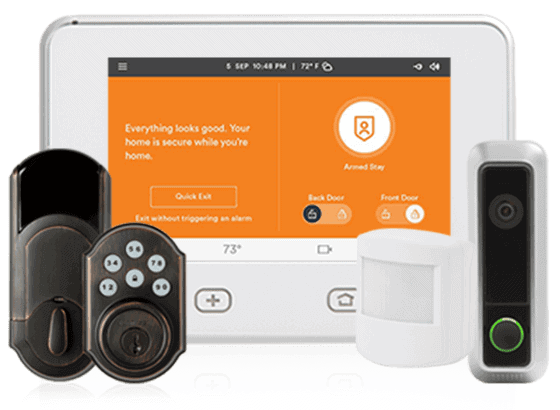Vivint Security Review
Combining AI technology with our personal preferences, Vivint’s Smart Deter feature makes this security system worth the premium price tag.
 Aliza Vigderman, Senior Editor, Industry Analyst
&
Aliza Vigderman, Senior Editor, Industry Analyst
&
 Gabe Turner, Chief Editor
Last Updated on Feb 25, 2025
Gabe Turner, Chief Editor
Last Updated on Feb 25, 2025
What We Like
- Professional monitoring: All systems have the option of professional monitoring and cellular backup to secure homes.
- Integrations with Alexa and Google Assistant: In addition, Vivint works with Philips Hue smart lighting and Nest thermostats.
- User-friendly app: The Vivint app is easy to use on both iPhones and Androids.
What We Don't Like
- Expensive monthly monitoring: Vivint is not a cheap system. You could end up paying as much as $39.99 per month for professional monitoring, and that’s not including cameras, extra video storage, and other add-ons.
- Moving fee: If you move, you’ll have to pay $129 to get your system re-installed.
- Proprietary equipment: Vivint uses its own equipment, and that means other alarm companies can’t take over monitoring. If you stop paying Vivint for monitoring, the system becomes unusable.
Bottom Line
Vivint is one of the strongest smart home security systems. From its smart touchscreen control panel called the Vivint Smart Hub to its AI-powered security cameras, Vivint delivers a unique smart home security experience that no other security system on the market can match.If you’re the type of person who always chooses the premium option, you will want to consider Vivint. It’s not the only one, but it’s certainly among the most luxe security systems we’ve tested, from the state-of-the-art control panel that can orchestrate a smart home system to the cameras that are expensive but unique.
But are the costs worth it? We think they are. When we tested Vivint’s security system, we were blown away by things such as the third-party smart home integrations and the Smart Deter feature that can tell the difference between our regular guests and prowlers hanging around our house. The way in which the monitoring center interacted with us through the Smart Hub was also impressive. There’s a lot to get through, so let’s find out why Vivint is one of the best smart home security systems.
>> Check Out: How Much Does A Security System Usually Cost?

Overall Rating
- Advanced smart home capabilities
- Professional installation
- Industry-leading security cameras
Vivint Review Video
Want to see Vivint in action? We dive deeper into how the equipment works and show you how easy it is to operate the system from within the app. Vivint has upgraded its camera since we released our video review. But don’t worry, we’ll talk all about it below.
Vivint Basic Security System Components
For this review, we wanted to test as many Vivint components as we could with our limited budget – $1,200. Here’s what we ended up with:
- Vivint Smart Hub
- Motion sensors
- Glass break sensors
- Entry sensors
- Smoke and CO detectors
- Kwikset smart lock
- Vivint Outdoor Camera Pro
If you’re wondering how that standard package cost us $1,200, that’s because of the outdoor camera. That one camera set us back $399. We know; it’s expensive even compared to the likes of Nest Cams that can cost as much as $279. But if you’re buying a Vivint system, we recommend the outdoor camera. It’s Vivint’s flagship product that offers a feature called Smart Deter, which deters burglars before they enter your home. That alone can make the camera a valuable addition to your home security.
>> Read More: Vivint Equipment and Monitoring Costs
We’re going to take a look at the Vivint Outdoor Camera Pro in a bit, but for now, let’s talk about Vivint’s standard equipment. Let’s start with the device required for all Vivint packages – the Vivint Smart Hub.
Pro Tip: All of Vivint’s packages are customizable. We had a good chat with the sales rep to work out what equipment we needed within our $1,200 budget. On the same call, we booked our installation and talked through all the monitoring features.
Vivint Smart Hub
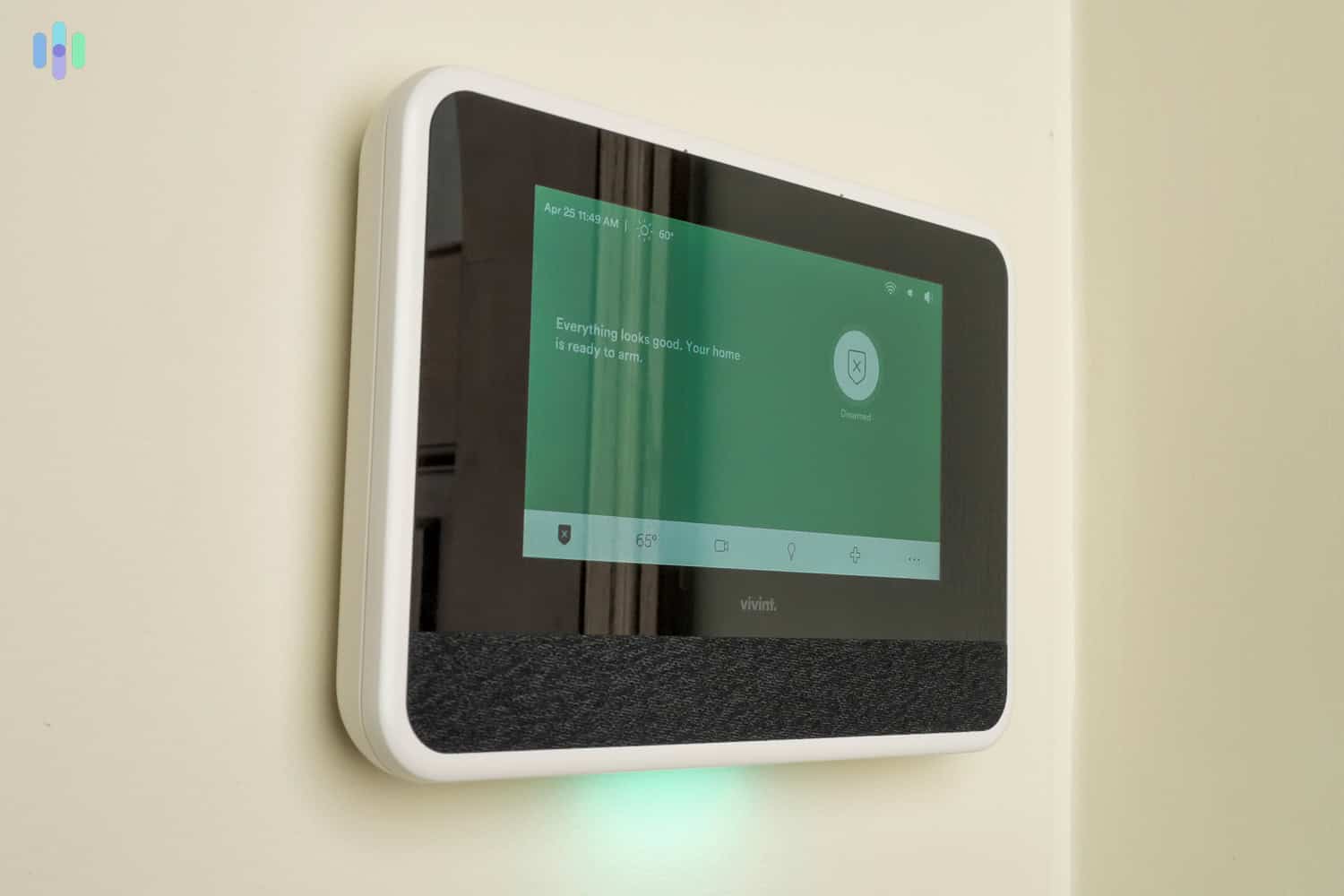
Let us start by saying that the Vivint Smart Hub is one of the most functional touch screen control panel we’ve tested. Arming and disarming Vivint through it was a given, but it also let us conveniently control our smart home devices and watch live streams from our security cameras. If you buy a Vivint doorbell camera, you would be able to use the hub to answer your door as well, kind of like a digital peephole. For comparison, see our Cove review. Cove is another security system with a touch screen panel, but it wasn’t nearly as useful as that of Vivint.
Another standout feature of the Vivint Smart Hub was that during our break-in simulations, the monitoring center was able to reach us using the hub. And we were able to talk back. Convenient two-way communication comes in handy during emergencies – or even when you accidentally trigger the system on your way in. You can just say your verbal passcode to cancel the alarm, potentially saving you from false alarm penalties.
We also appreciate that the Smart Hub can function through power and internet outages. Keep in mind that all Vivint sensors run on batteries so they can still sense intrusion when power to your house is cut. To match that, the plugged-in Smart Hub comes with a 24-hour battery backup. As for communication, it uses dual-path technology. It can send signals via your home internet when it’s available, but when your ISP is acting up again, it can also use cellular signals. It’s actually one of the best cellular security systems out there.
FYI: Use the Smart Hub to set up automations. In our case, we set the system to notify our phones if our garage door is left open after we head to work at around 8:30 am. Plus, using the Vivint app, we could control our garage door opener because fortunately, it’s compatible with Vivint.
Security Sensors
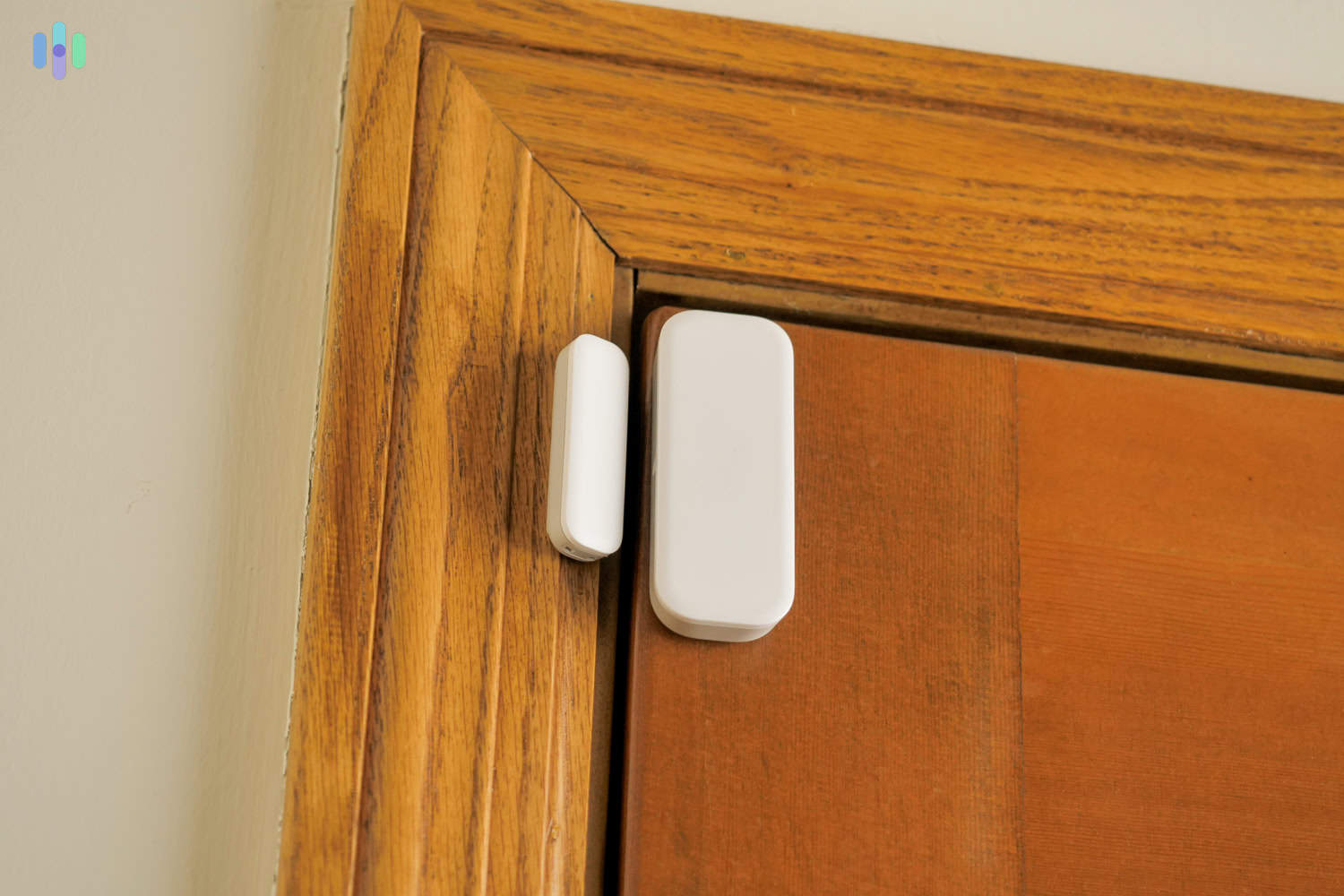
We added motion sensors, door sensors, window sensors, and glass break sensors to our Vivint package. All of them connected to our Smart Hub wirelessly. When one of them was triggered, the Smart Hub sent an alert to our smartphones.
We never expect much from those sensors though. They are the backbone of the security system, but their tasks are relatively simple. As long as they can reliably detect potential intrusion – which they can – we’re happy.
That said, if we’re being nitpicky, we’d say that the design isn’t up to snuff. They weren’t as sleek-looking as we expected from a premium brand like Vivint. We were expecting Apple-standards design, but all we got were boxy looking pieces of equipment. They weren’t ugly, but they didn’t exactly blend in easily, unlike our ADT door sensors. When we reviewed ADT, the technician used ones that matched the color of the door trim so they didn’t stand so obviously.
With that in mind, we recommend the recessed door sensor in place of the regular door sensor. The recessed door sensors are installed flush with the doorframe, so they won’t affect your door’s aesthetics. And since Vivint offers professional installation, you won’t have to worry about drilling your doorframe yourself.

Ping Indoor Camera
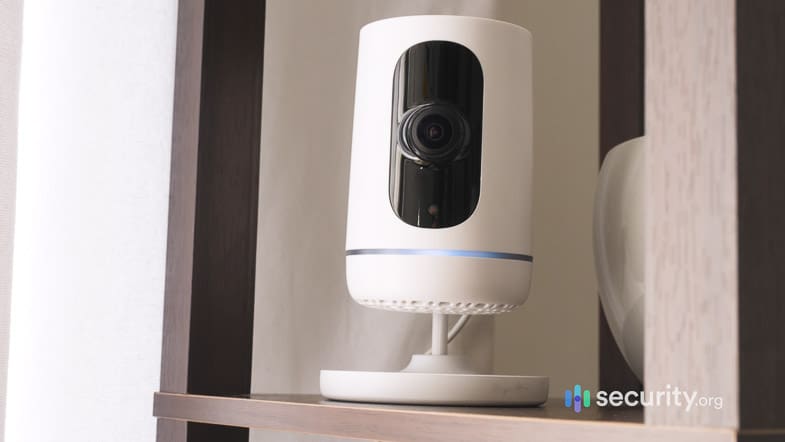
In addition to the equipment we bought from Vivint, we also dusted off a Vivint component we’ve been keeping in a box for years – the Ping Indoor Camera. Vivint no longer offers it, but it still worked.
Keep in mind that this camera was released in 2016. It was so ahead of its time that even by today’s standards, the Ping Indoor Camera isn’t too shabby. We mean, it has a 1080p HD resolution and a 155-degree viewing angle, which is still slightly above the industry standard viewing angle today (130 degrees). It also has a unique function that we’re yet to see from other indoor cameras. There’s a “call” button on the topside of the camera that, when pressed, notifies your phone and starts a two-way audio call via the camera – helpful in homes with babysitters, caregivers, and seniors who refuse to use a smartphone.
Ping can also see everything clearly at night. The range is limited though. When we streamed footage from the Vivint app, we noticed the infrared component illuminated part of the room, which you can see in the photo below. It’s fine for indoor video monitoring, but you might want to have a couple of nightlights nearby to improve the image quality.

Even though you can’t get the Ping indoor camera anymore, it goes to show how good Vivint’s equipment is. We’ve had this device for eight years, and it still works as good as new.
Vivint Ping Vs. Indoor Camera Pro
Of course, we’re here to talk about what you can currently get from Vivint. And with Ping being discontinued, the only indoor camera option now is the Vivint Indoor Camera Pro. The name’s not as catchy as Ping, but it retained the goodies – it boasts a 1080p resolution (but now with HDR), it has a 150-degree viewing angle, and the “call” button is still there. The image below was captured with our Vivint Ping and already looks great. Now, picture how good the Indoor Camera Pro will be.

The biggest improvements are the local storage and A.I. detection. With the Indoor Camera Pro, you can save videos locally when you’re having a spotty internet connection through the on-board memory. It saves videos locally for about 10 days, in addition to the cloud storage that comes with the Vivint monitoring plan.
On top of that, you can set up recording parameters that trigger the camera to record. For example, you can set it to record when it sees your pet (making it a good pet camera), or a person. We saw a glimpse of how these recording rules work when we tested the Vivint Outdoor Camera Pro (more on that below), and the level of customizations you can make is impressive.
>> Learn More: The Best Security Systems for Pet Owners
FYI: The Indoor Camera Pro’s design also improves on that of Ping. The older indoor camera is kind of shaped like an air freshener, and it’s not really ideal for wall-mounting. The Indoor Camera Pro has a simpler, sleeker look. More importantly, you can either place it on a flat surface or hang it on the wall.
Vivint Outdoor Camera Pro
If you thought the indoor camera was impressive, wait until you see Vivint’s outdoor camera – the Vivint Outdoor Camera Pro. At $399, it was the most expensive piece of Vivint equipment we bought and tested. But even though it costs double the $200 average cost of outdoor cameras, we’re convinced that it’s the most worth it device we purchased from Vivint.
For starters, it has impressive video quality. It has a clear, 1080p HD resolution, but on top of that, it has a 4K image sensor. This improves the video quality, clarity, and color contrast. With so much going on outdoors, we appreciate the improved video quality.
The camera also features HDR, which helps with light distortion outside. In the sample footage above taken by our camera expert in his home, you can see that there are no glary or shadowy areas despite the high lighting contrast. That’s largely thanks to HDR.
Throw in the camera’s wide, 140-degree viewing angle, three times optical zoom, 10 times digital zoom, and powerful night vision, and you get an impressively clear camera quality day and night. It also had local storage, much like the Indoor Camera Pro.
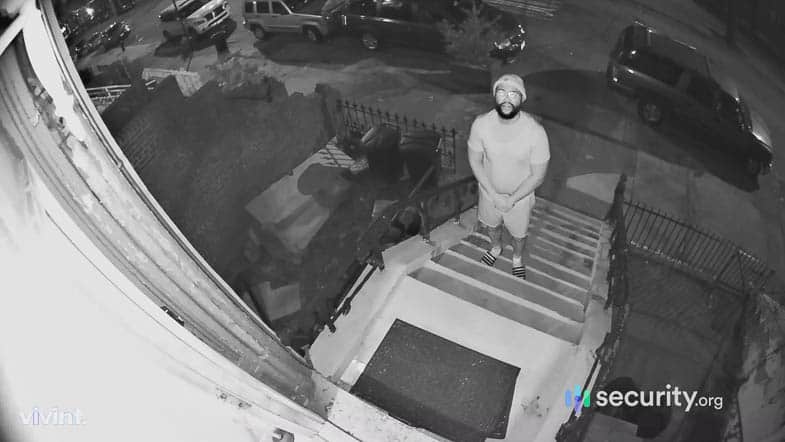
What really impressed us was the Smart Deter feature. Using AI and by following the parameters we set, it detected intruders as well as prowlers. We created a virtual fence around our property and set how long people are allowed to stay within it. If someone lurks around for longer than that, it will flash its LED lights and sound an audible alarm.
If you have extra $250 lying around, you can even buy a Vivint Spotlight Pro to connect to the camera. If the camera detects a lurker or intruder, the spotlight shines its light in their direction, and thanks to the camera’s AI, it can even follow the intruder as they move around your yard. We didn’t make the most of it because we live in a Brooklyn apartment, but it’s perfect if you have a wide front yard.
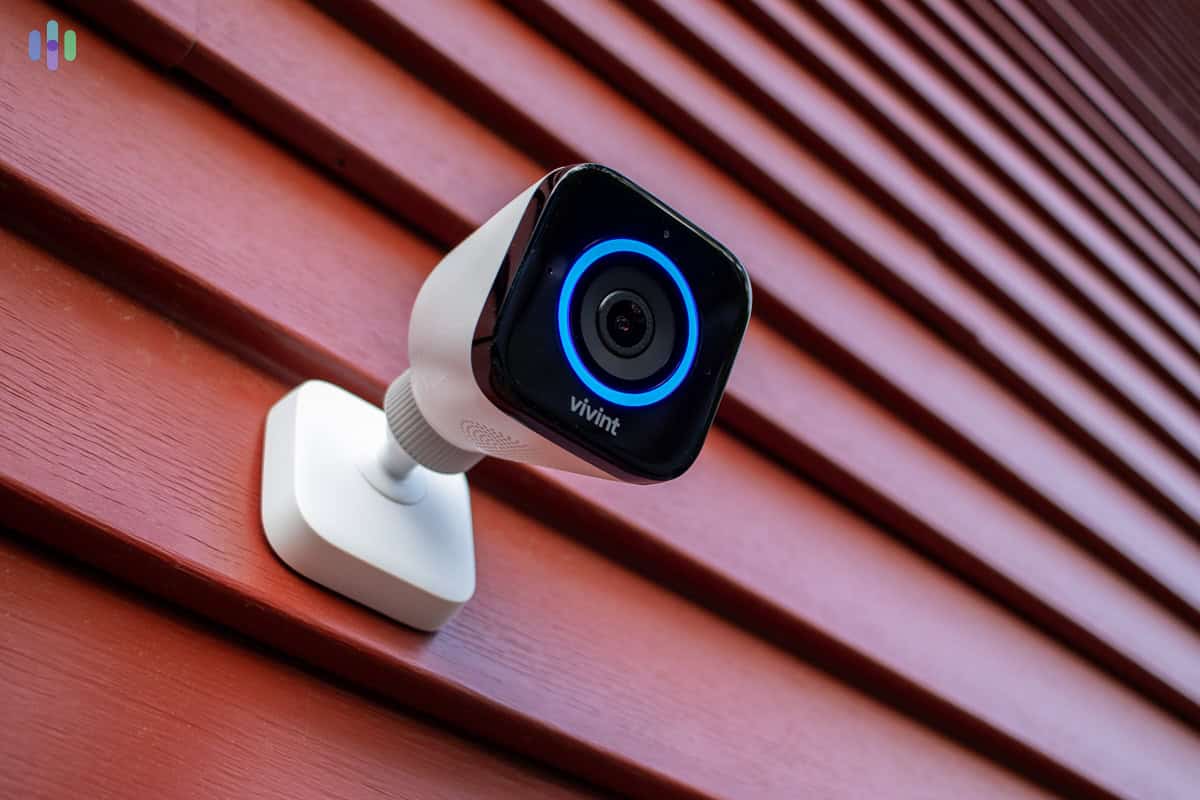
Another thing the AI can do is differentiate between humans, pets, and vehicles. This was more useful to us because there’s a busy street right in front of our home. Unlike cheaper outdoor cameras we tested with no AI that got triggered by just about any movement, the Vivint camera alerted us only at the sight of real humans.
One drawback of the Vivint Outdoor Camera Pro is that it needs a power outlet to work. Sure, we didn’t have to worry about the battery running out, but it limited our placement options. We’re still happy we got the Vivint Outdoor Camera Pro, although it’s pretty expensive at $399.99.
In comparison, the Nest Cam Battery we reviewed only cost $179. But the Vivint outdoor camera comes with built-in person detection plus a smart feature that detects and deters loiterers. The Nest Cam Outdoor requires a Nest Aware subscription starting at $8 per month to use its smartest features – facial recognition.

Vivint Doorbell Camera
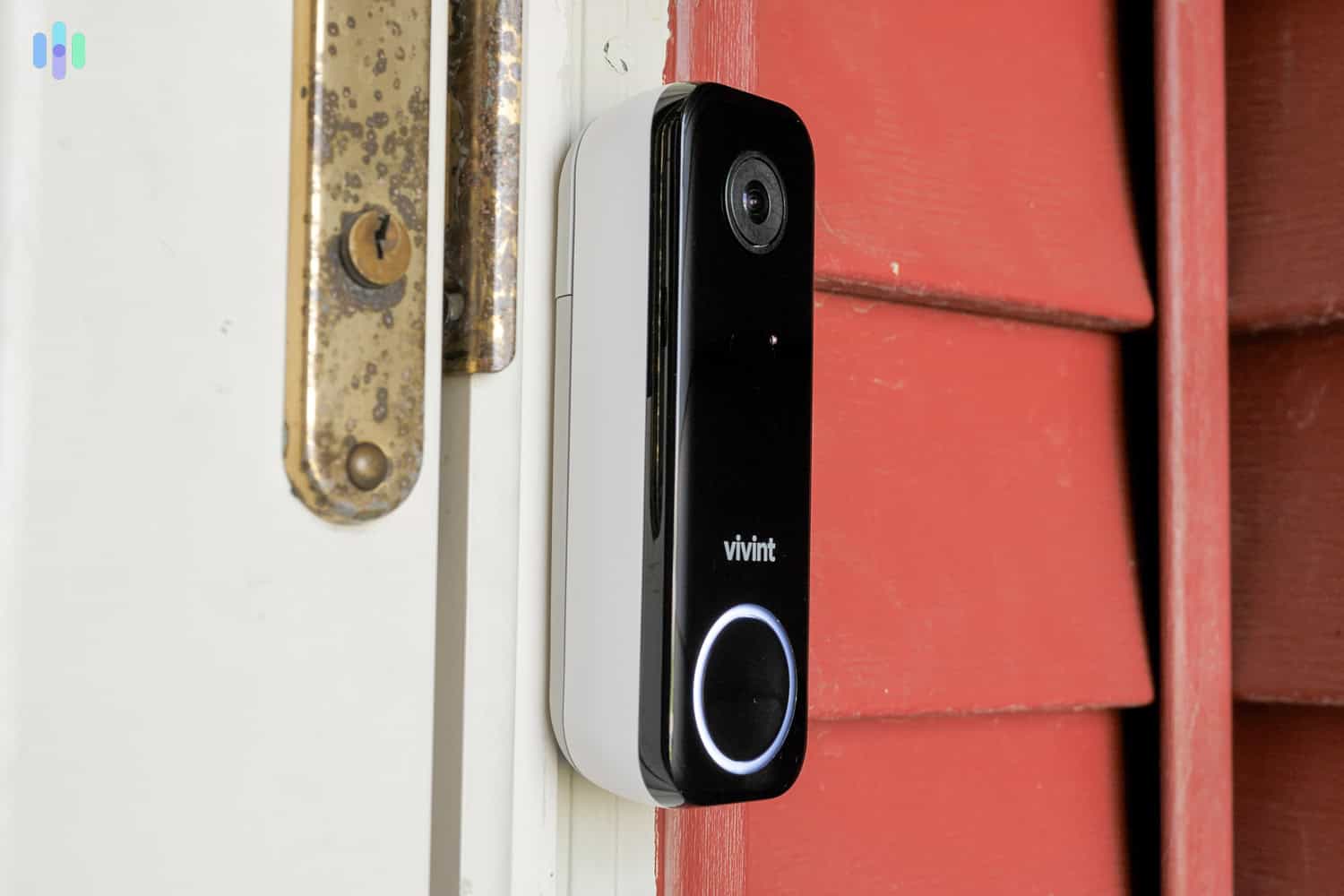
Thankfully, the old Vivint Doorbell Camera seen above has been given an upgrade and now has 1664p HDR resolution compared to 720p. The Doorbell Camera Pro also has a 180-degree by 180-degree field of view and infrared night vision. However, you have to connect it to the internal wiring. If that’s an issue, you might be better off getting a Ring video doorbell.
Something the Ring Video Doorbell Pro doesn’t have is artificial intelligence. Meanwhile, the Vivint Doorbell Camera Pro knows the difference between delivery drivers and porch thieves. When someone is busted, the LED ring glows red and the 90 dB speaker lets the criminal know they’ve been caught on camera.
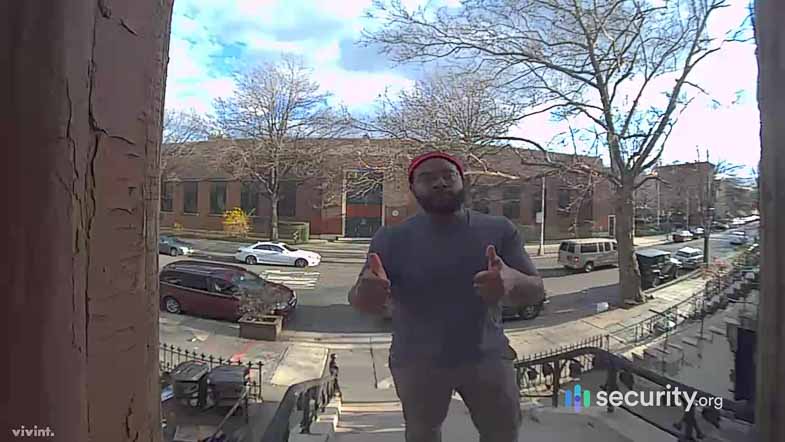
Another new feature is customizable surveillance zones. In the image above from the old Vivint doorbell camera, we’d get false alarms from people and pets on the sidewalk. But now we can exclude that area and focus the alerts to anyone walking up our stairs.
Like Vivint’s other equipment, the Doorbell Camera Pro will keep recording if the Wi-Fi or power goes down. It’s even capable of recording 24/7 thanks to the built-in SD card. We scrubbed through a day’s worth of footage in the Vivint app and had no issue finding clips we were looking for.
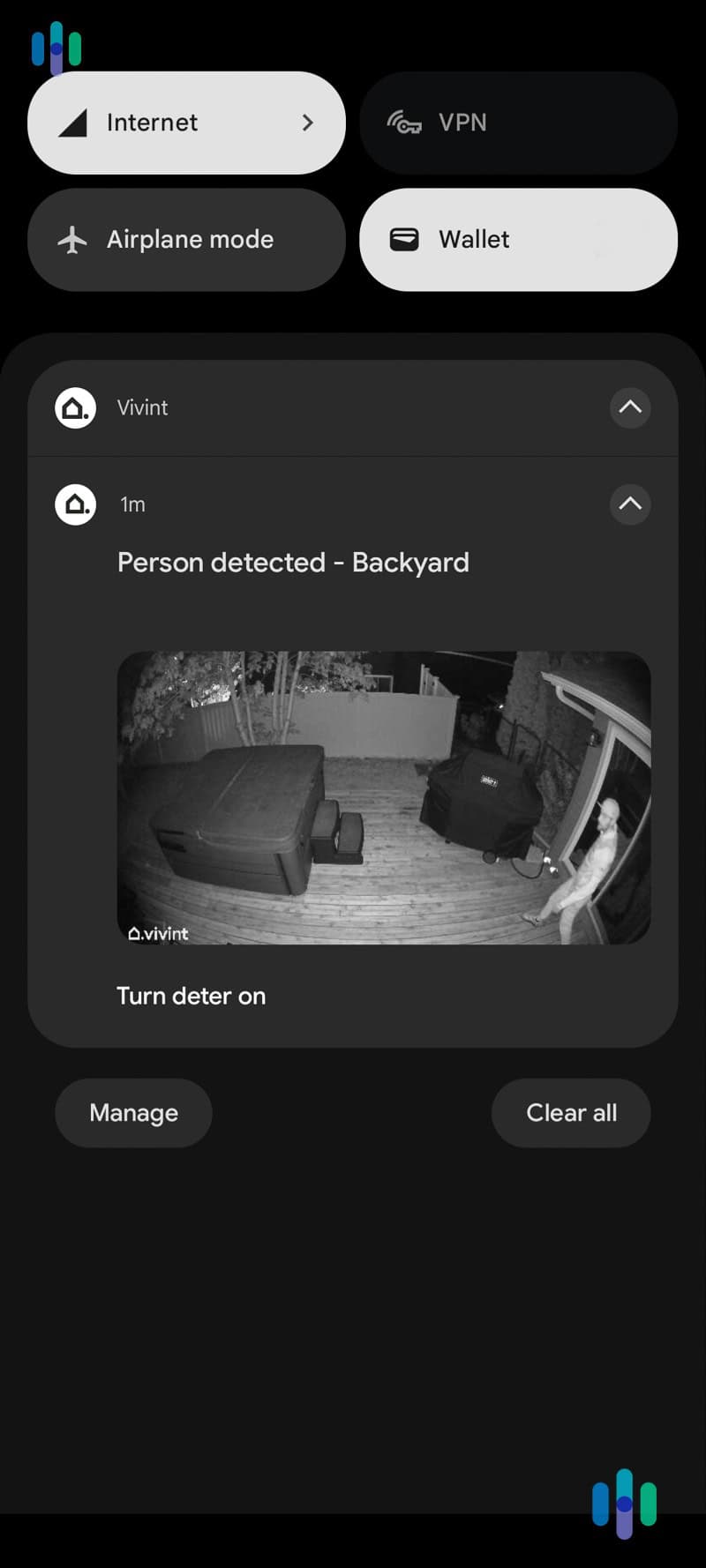
We think person detection is an essential doorbell camera feature, especially since our front door faces the street. Thanks to person detection, we didn’t get alerted of every car passing or every squirrel running by. We only received alerts when there were actual people at our door.
In our opinion, person detection is an essential doorbell camera feature, especially since our front door faces the street. Thanks to person detection, we didn’t get alerted of every car passing or every squirrel running by. Instead, we only received alerts when there were actual people at our door.
Kwikset Smart Lock
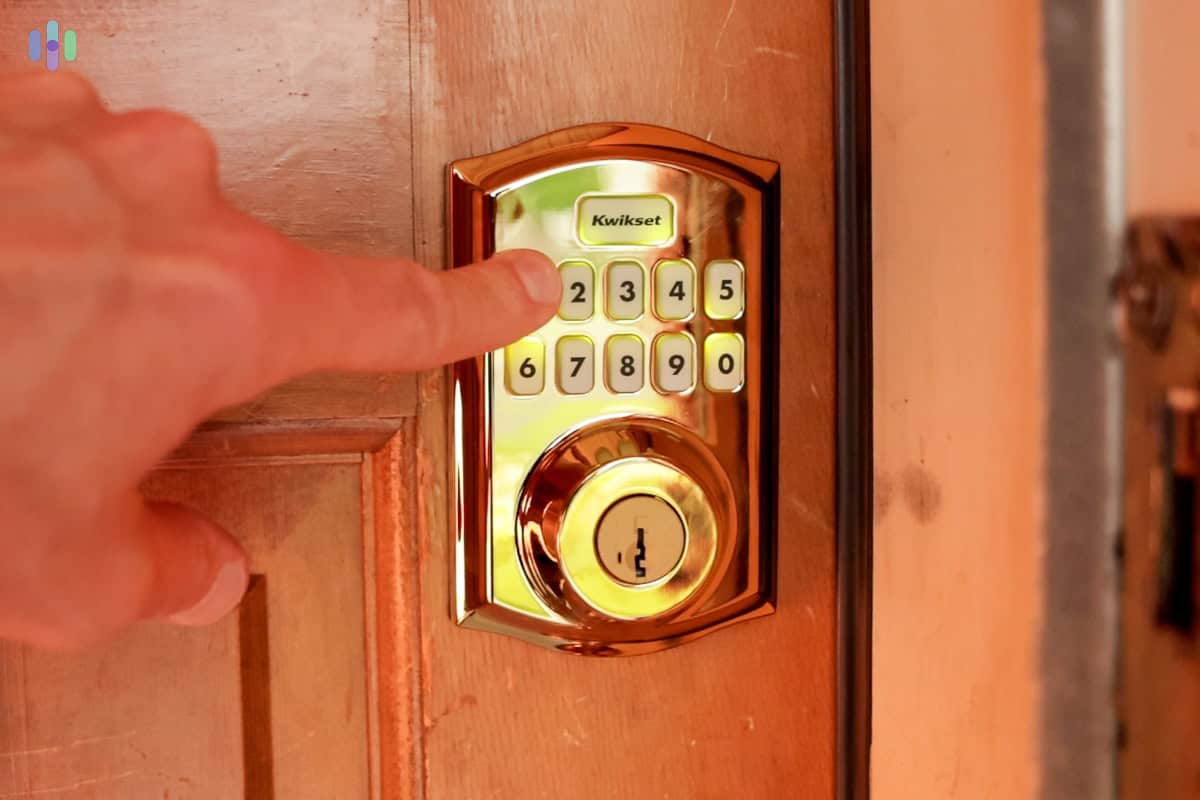
A smart lock is one of those smart home devices that can make your home safer, especially if you tend to be forgetful about locking your doors. We got Kwikset-branded smart locks from Vivint. That wasn’t a surprise. Very few security companies actually make their own smart locks. Most of the time, they partner up with a smart lock brand.
In all fairness, the Kwikset smart lock we got was impressive. We got to control it (lock/unlock) using the Vivint app. We also liked that it has a physical keypad for locking and unlocking without keys. It even gave us the option to share up to 30 temporary codes to other people – from guests staying over to our pet sitter.
And even though the Kwikset lock wasn’t a Vivint product, we had fun connecting it to other home automation devices and creating automated actions. For us, that meant having the doors unlock when the smoke alarm went off, which brings us to our next point…
Did You Know: We’ve been playing around with ADT’s latest feature, Trusted Neighbor. It uses facial recognition on Nest Cams and Doorbells to detect if someone approaching your house is on your trusted list. It’s included in all ADT packages with Nest products and the feature can be accessed in the app.
Vivint Safety Sensors
Smoke Alarm
Vivint can’t prevent fires but it can send an alert before it gets out of hand using a Wi-Fi connected smoke alarm. It can protect a 35-foot radius, comes equipped with an 85-decibel siren, and has a five-year battery life.
The Vivint smoke alarm was Wi-Fi connected, and although we only bought one, we learned that they also interconnect with each other when you have more than one installed – when one sounds, they all sound.
CO Detector
Vivint offers a nearly identical detector, except that it detects carbon monoxide. The detector impressed us with the fact that it linked up with other connected devices. For example, if it goes off, the doors will automatically unlock, the window sensors will automatically disarm and the furnace fan will turn on, allowing for ventilation and an easy escape. Basically, the CO detector does more than beep!
Water Sensor
Finally, Vivint offers a water sensor that prevents leaks, which we placed near our washing machine. The water sensor is also wireless and has a battery life of three to six years.
Unlike the other sensors, the water sensor won’t trigger an emergency response from Vivint’s monitoring center. Rather, the water sensor sends a soft alert to your phone via the app, so you can repair the leak as quickly as possible.
Vivint and the Smart Home
We’re huge smart home nerds, so imagine our excitement to see that Vivint home automation works with both Alexa1, Amazon’s voice assistant, and Google Assistant, Google’s version. Let’s talk about how we could command our Vivint system with Alexa vs. Google Assistant.
Voice Control
We used Alexa to control our Vivint-compatible Philips hue lights, smart thermostat from Nest, and Kwikset smart lock. Additionally, we used Alexa to arm our Vivint security system, although we couldn’t disarm it with our voice for security purposes. Lastly, we had Alexa show our live-streamed footage on our Echo devices, like the Amazon Echo Show 8 we reviewed, along with our Fire TV. It was great to see our footage on the big screen!
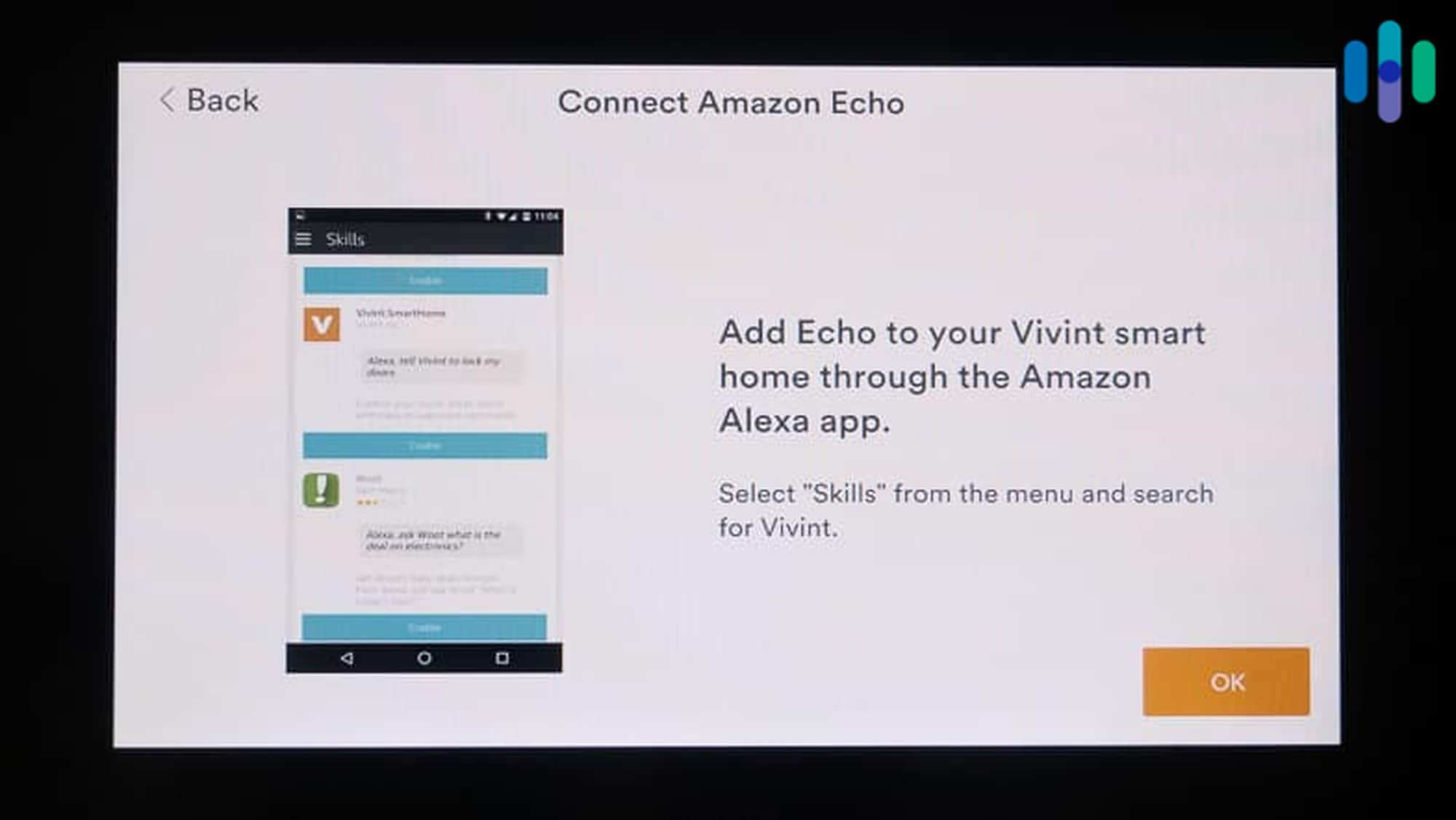
Google Assistant performed the exact same functions as Alexa, except we viewed our footage on our Google Nest Hubs and Google Nest Hub Max instead of the Echo Shows. You can read our Google Nest Hub review and our Nest Hub Max review for more details about these smart displays.
FYI: While it’s impressively well-connected with Google and Alexa, Vivint isn’t compatible with Apple HomeKit; we find that very few security systems are. However, Vivint has a smartwatch app that works quite well with our Apple Watches, not to mention an intuitive and easy to use iPhone app.
Third-Party Integrations
We mentioned earlier using Alexa to control our Philips Hue lights, Nest’s smart thermostat, and Kwikset’s smart lock. But these are just a few of the products you can integrate into the Vivint app and create automations with. Vivint is compatible even with garage door controllers, smart sprinkler systems, and other smart home gadgets that most smart security systems don’t work with.

Better still, we found Vivint’s automation features impressive. You can automate smart home functions so that everything in your home responds to your daily routine. Whenever we arm our security system in Away mode, our doors lock and our smart thermostat goes into energy saving mode. It helps us save money on bills, while also making our home more secure.
Z-Wave and Zigbee
Having third-party integrations is nice and all, but the fact remains that smart home brands are divided. What’s more, the smart home landscape is always changing. One moment, two brands work together, but before you know it, they no longer do. That’s why protocol-based integrations are also nice to have.
Z-Wave and Zigbee are widely-used smart home languages – basically, wireless protocols. If two devices use the same protocols, they can most likely keep working with each other no matter what. You only need a hub that supports the protocol to orchestrate them. That’s where Vivint comes in, because the Vivint Smart Hub can understand both Z-Wave and Zigbee. And given Vivint’s impressive automation capabilities, you can build a harmonious smart home system pretty easily. We know we did.
The Vivint App
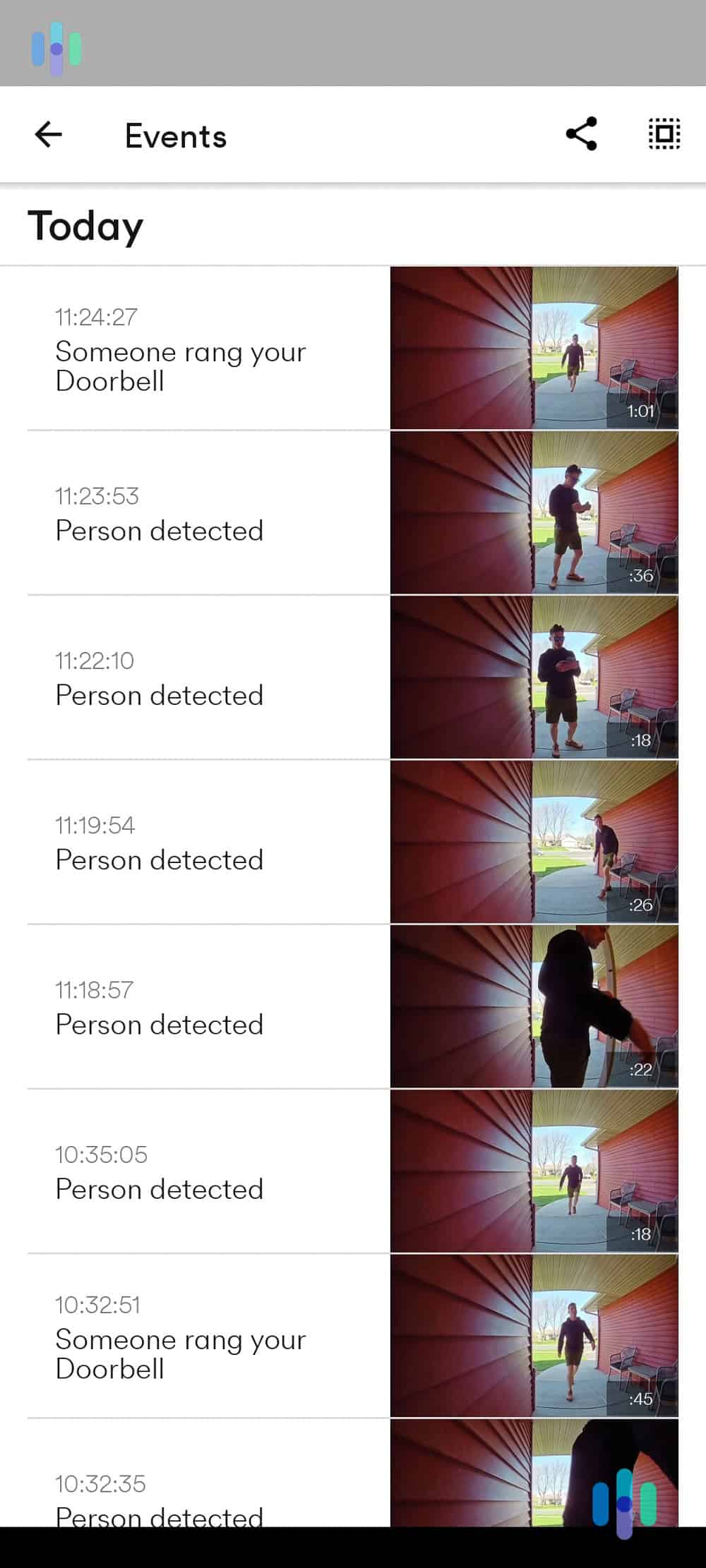
The Vivint app was our home away from home, a way to arm and disarm our system, control connected devices, speak through two-way audio, live stream footage, view cloud storage, and receive notifications when we weren’t at home.
In terms of usability, we had no issues with the Vivint app. It has a sleek, modern look, and it is easy to navigate through the menus. If you use dating apps, you’ll get the hang of it quickly as you can swipe left to arm “Staying” mode and right to arm “Leaving” mode.
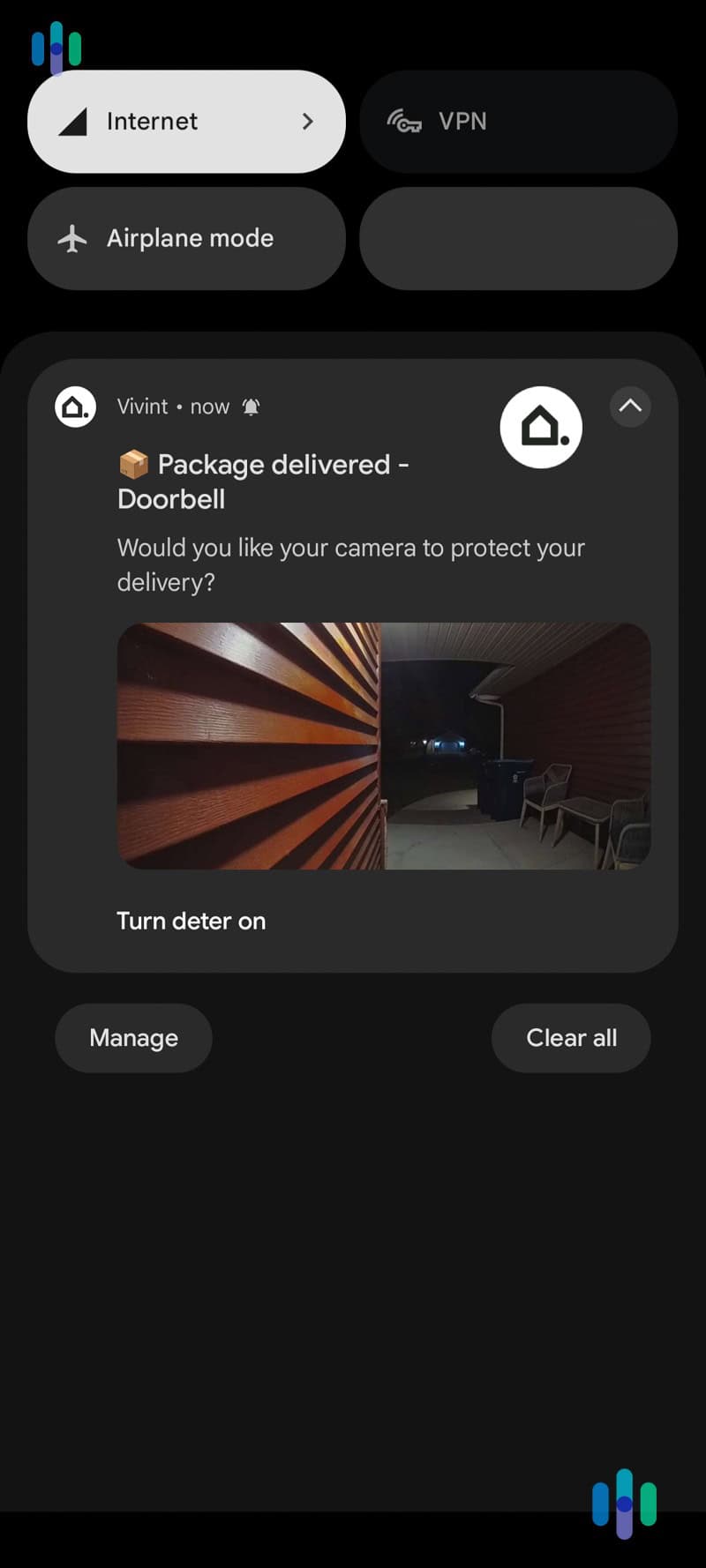
We did experience a little lag whenever we streamed live camera feeds, but it wasn’t a deal-breaker for us. Just a quick relaunch of the app usually solved the issue.
Installing Vivint
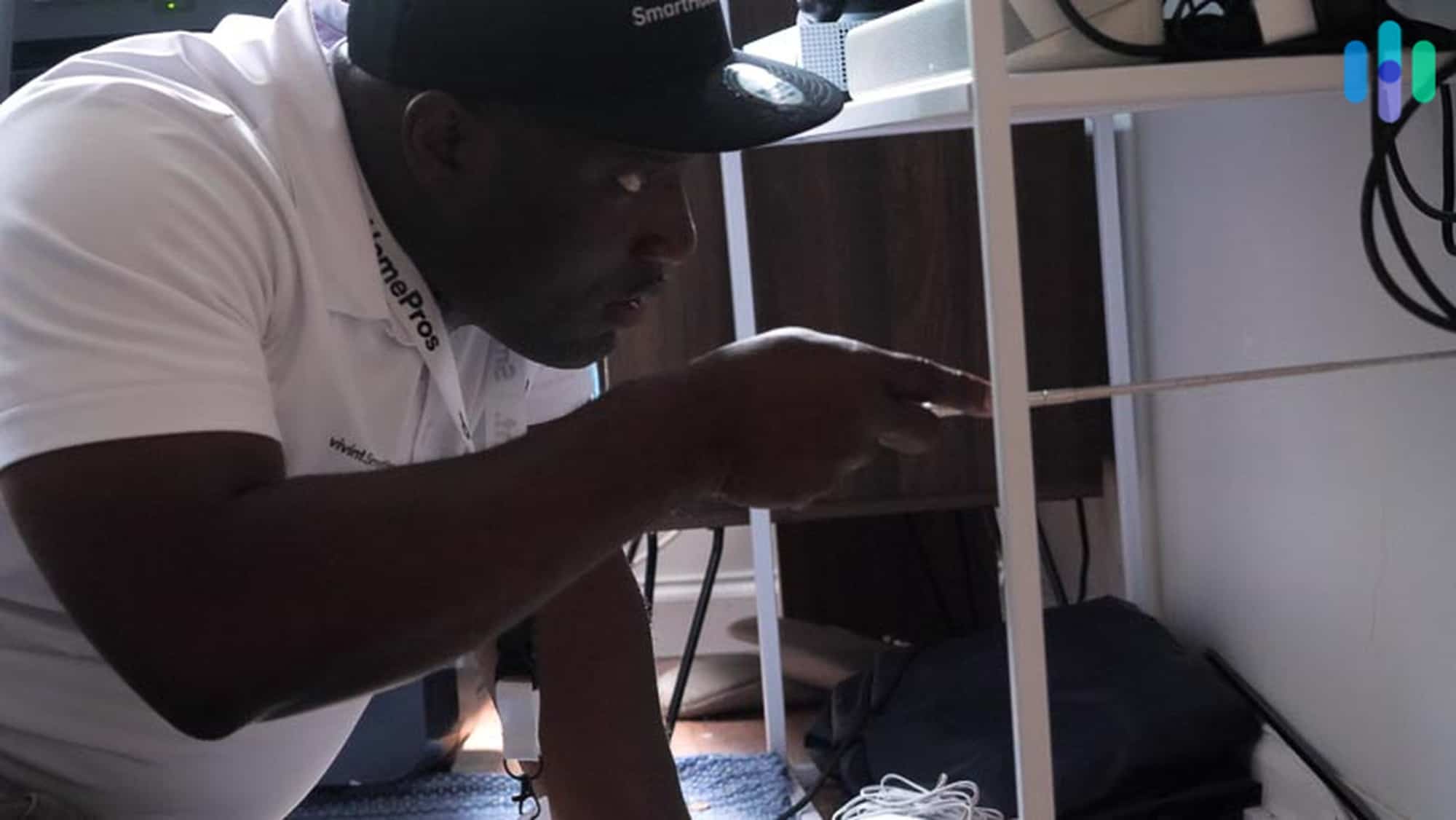
We were lucky to have timed our purchase with a Vivint deal that gave us free professional installation, but since we’re talking about costs here, we asked the technician and he told us that the service typically costs $199. Again, that’s a little pricier, since most installation services charge about $100. If you look at it, though, you’d be happy that a trained technician will be doing all the work. Vivint security systems are sophisticated, and installing one is definitely not a job any regular Joe can do.
Of course, you could time your purchase to coincide with Vivint special offers, but ultimately, just prepare yourself for the professional installation cost.
Another thing to note is if you’re moving residences, you’ll have to pay $129 to get your system re-installed. That is a bit of a burden, which is why Vivint isn’t very renter-friendly. For those that want DIY installation, check out our review of Ring Alarm.
Pro Tip: If you’re planning on moving anytime soon, we recommend installing your Vivint home security system after you’ve settled in. Otherwise, you’ll have to pay a $129 installation fee to move it to your new place.
Did Vivint Work Well?
SSince Vivint’s technicians did the installation for us, let’s talk about how well it worked post-installation. Using our system on a day-to-day basis, we didn’t encounter any problems, and we’ve had it up and running for over a year at this point. The Panel made the system really easy to navigate if you’re home, and the app made it easy if you’re not. Overall, the Vivint system is really painless to install and use. It’s also super durable; not one component has broken in our time using it.
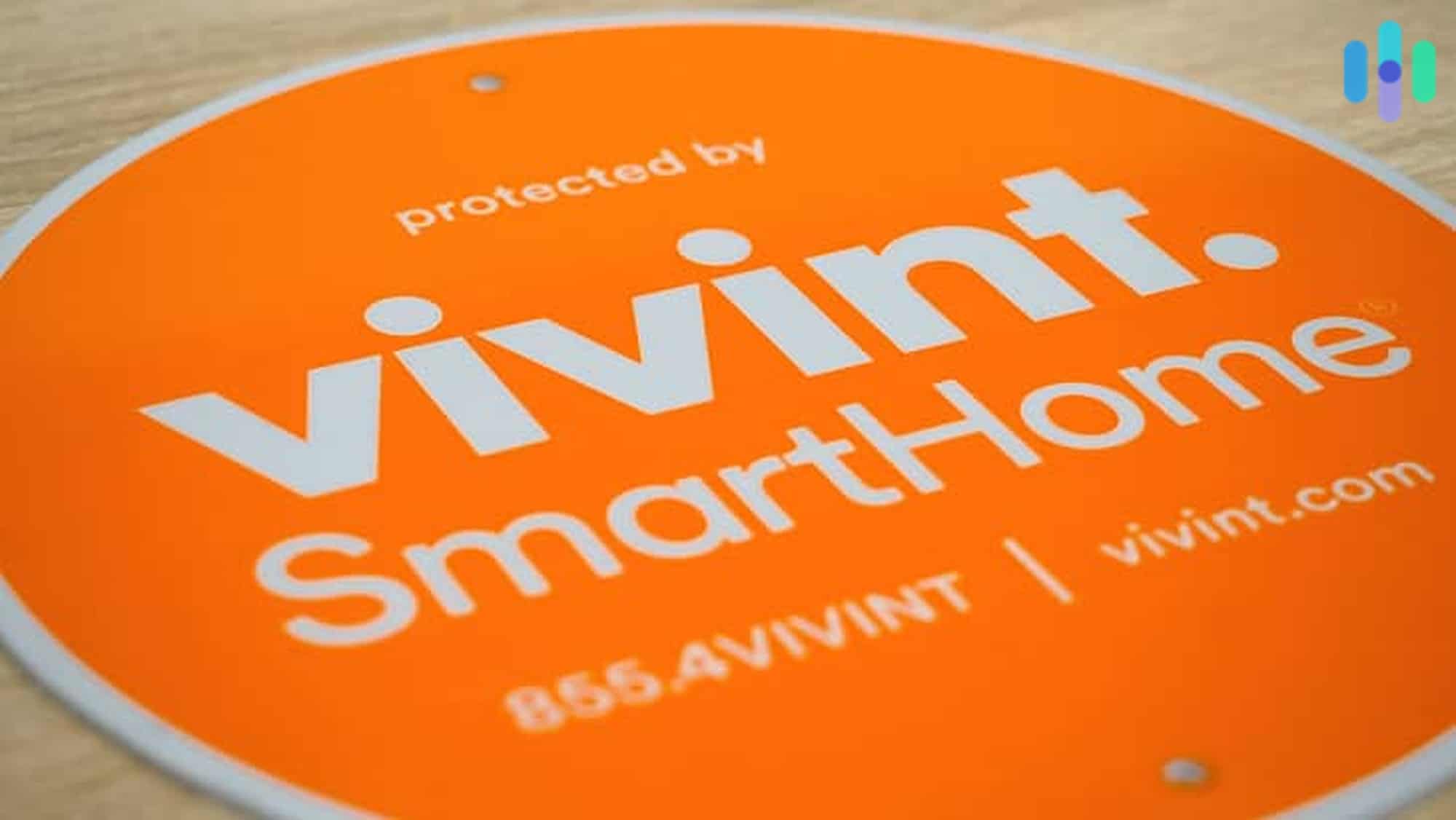
Pro Tip: Our technician did an excellent job hiding the wires on the Vivint Smart Hub and Outdoor Camera Pro. If you’re installing a hardwired security system yourself, like Lorex, you can try doing this yourself. But we recommend paying the extra for a professional to hide all the messy cables.
Vivint Monitoring and Pricing
Professional monitoring is mandatory for Vivint customers. Although you can cancel your security monitoring plan down the line and keep your Vivint system, doing so will deactivate all of Vivint’s smart features. Essentially, it will turn into a local alarm, relying on sirens to alert you. You’ll also have to use the touchscreen panel to control the system every time, since the app will no longer work for you.
But our preference is to use professional monitoring. We’d rather scroll through Instagram Reels on our phones instead of switching between live streams of our cameras. Plus, when we look at home security statistics, we think it’s best to leave the monitoring to the professionals. For example, there are several studies that show that burglaries happen most commonly during the day, especially around 10 a.m. and 3 p.m., which is also when most people are away from their homes.2
Another thing to keep in mind with Vivint is that there’s likely going to be a contract, especially if you finance your equipment. The contract can be up to five years, and canceling before the end of the term will result in hefty cancellation fees. You will also have to pay the remaining cost of the equipment.
There is one sliver of good news, though. For the first 72 hours after signing a contract, you have the option to cancel your monitoring agreement without penalties. You’ll receive a full refund provided that you can send back the equipment in good condition. 72 hours is a small window – other companies allow returns for up to 30 days – but it’s better than nothing.
That 72-hour window applies to most Vivint customers, but customers 65 years old and above enjoy a more relaxed return policy. Rather than three days, they are given 60 days to fully test out the system and return it if it doesn’t work out for them.
Pro Tip: Vivint doesn’t have a self-monitoring option like abode or Ring. Head over to our guide on the best-unmonitored security systems for options.
Monitoring & Pricing Overview for Vivint
Vivint’s monitoring service can cost anywhere between $30 to $50 per month, which is about the same range as ADT but a little more expensive than SimpliSafe. The final cost depends on factors like how many security cameras you own, if you want home automation features, and the tax rules in your state.
Our Vivint technician told us that we can have up to six cameras, but the highest-tier service plan is needed to enjoy features like video verification. It’s also an extra $5 per month per camera for cloud storage.
Overall, we’d say that in terms of pricing, Vivint is certainly on the higher end. Ring Alarm costs only $20 a month for professional monitoring and cellular backup and even throws in 180 days of cloud storage. So for those on a budget, Vivint definitely isn’t for you. On the brighter side, Vivint does offer deals occasionally. Pay special attention to Vivint’s Black Friday deals, as they’ve been impressive in previous years.
Support with Vivint
There’s no harm in asking for help! Vivint offers support via phone and live chat. We have had mixed experiences with the customer support team. When we first chatted with a representative, the connection dropped and the conversation ended. The next time we tried to click on the “Support Chat” button, it was not clickable. As we much prefer chatting online over speaking on the phone, this was a bit annoying.
Vivint really wants you to call and speak to their representatives, so we called to ask for some information about Vivint’s discount packages, and 25 minutes later, we still did not have all the information we wanted. All in all, it was not a great experience; we were on hold for a while, then transferred between multiple people, and told to “look at the website”, which has little to no information on it regarding packages. So when it comes to customer support, Vivint wasn’t up to par with Frontpoint, whose representatives were truly helpful when we reviewed Frontpoint’s system. In fact, if you’re looking to find answers to your questions about Vivint, we suggest you check our Vivint FAQ page before calling Vivint.
Our Vivint Research and Data
The following is the data and research conducted for this review by our industry-experts. Learn More.
Encryption
| In Transit | Yes |
|---|---|
| At rest? | Yes |
| All network communications and capabilities? | Yes |
Security Updates
| Automatic, regular software/ firmware updates? | No |
|---|---|
| Product available to use during updates? | Yes |
Passwords
| Mandatory password? | Yes |
|---|---|
| Two-Factor authentication? | Yes |
| Multi-Factor authentication? | Yes |
Vulnerability Management
| Point of contact for reporting vulnerabilities? | security@vivint.com |
|---|---|
| Bug bounty program? | No |
Privacy Policy
| Link | https://www.vivint.com/legal/privacy-notice |
|---|---|
| Specific to device? | No |
| Readable? | Yes |
| What data they log | Contact information, signature, credit score, Social Security number, payment information, demographic information, device information, browsing history, customer service communications, location, video and audio recordings, environmental data |
| What data they don’t log | n/a |
| Can you delete your data? | Yes |
| Third-party sharing policies | Shares information with third parties. |
Surveillance
| Log camera device/ app footage | Yes |
|---|---|
| Log microphone device/ app | Yes |
| Location tracking device/ app | Yes |
Parental Controls
| Are there parental controls? | No |
|---|
Company History
| Any security breaches/ surveillance issues in past? | Yes |
|---|---|
| Did they do anything to fix it? | Yes |
Additional Security Features
| Anything like privacy shutters, privacy zones, etc.? | Yes |
|---|
Conclusion
Sure, Vivint is not the most affordable security system on the market. But it is a completely different experience to brands like SimpliSafe, Cove, and Frontpoint. The Vivint Outdoor Camera Pro is one of the best outdoor cameras we’ve used, and Smart Deter uses AI to detect prowlers inside a virtual fence we created. You might pay a lot of money upfront, but you won’t have to install the system or worry about monitoring your property. It sounds like a pretty good deal to us.
Buy Vivint if you want:
- Professional installation: You won’t have to lift a finger to get your Vivint security system installed.
- High-quality outdoor camera: Although it’s pricey, the Vivint Outdoor Camera Pro was one of the most impressive outdoor cameras we’ve ever tested.
- Google and Amazon integration: Whether you use Google Assistant or Alexa as your voice assistant, Vivint will fit right into your smart home.
But don’t buy Vivint if you’re prioritizing:
- Affordability: From equipment to monthly fees, Vivint is certainly not the cheapest option around.
- DIY installation: Besides the initial installation fee, you’ll have to get your system professionally reinstalled for at least $129 if or when you move to a different house.
- No-contract monitoring service: Unfortunately, you’d likely need to sign a long-term contract to use Vivint’s monitoring service. This can lock you into the service for up to five years.
There’s no question that Vivint is one of the best home security systems around. That is, if it’s what you’re looking for and it’s within your budget. Its inflexible monitoring contract and high fees are its biggest downsides, but if you can live with those, Vivint offers one of the most technologically-advanced home security systems on the market.
See How Vivint Compares To Other Home Security Providers
Vivint FAQs
-
How much does Vivint cost per month?
Vivint costs $39.99 per month. The price includes remote control of your system, 24/7 customer support online and over the phone, in-home technician services, and equipment warranties. You can cancel your contract afterwards and stop paying monthly fees, but doing so will cost you access to the Vivint app and professional monitoring.
-
Is Vivint a good company?
Vivint is a decent company, although it has gotten in legal trouble for its aggressive sales tactics and deceptive marketing in the past. However, it does provide a new security system with Alexa and Google Assistant integrations, free professional installation, and an easy-to-use app.
-
Is Vivint better than ADT?
We believe that Vivint and ADT are on the same playing field, so it depends on what you’re looking for. While ADT has more monitoring options, as it supports landline and cellular-based monitoring, Vivint wins for customer support and its app.
-
Can I cancel Vivint?
You can cancel Vivint if there was a death of a close one, a bankruptcy, a transition to an assisted living home, or another extenuating circumstance. Otherwise, users may not be able to get out of their contracts, if they financed their equipment.
-
Can Vivint see my cameras?
For customers that pay for professional monitoring, the monitoring team can check into their cameras if alarms go off in order to verify emergencies.
-
Does Vivint run a credit check?
For users financing their Vivint equipment through FlexPay, Vivint will run a credit check. However, Vivint won’t run a credit check for users paying for their equipment upfront.
>> Related: Best Security Systems with No Credit Check
Amazon. (2020). Vivint.SmartHome – Complete App.
amazon.com/Vivint-Inc-Vivint-SmartHome-Complete/dp/B01A6ACVD2/Arizona State University. (2002). Burglary of Single-Family Houses.
popcenter.asu.edu/content/burglary-single-family-houses-0&sa=D&source=docs&ust=1727050895202762&usg=AOvVaw3e-Sy5GDmVqh-V0RFhKfJD

